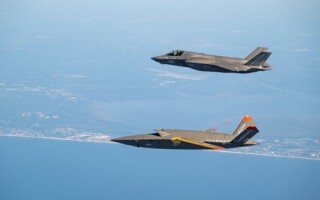Navy program manager to discuss virtual aviation training at I/ITSEC this week
NewsDecember 01, 2014

PATUXENT RIVER, Md. Officials at the Naval Aviation Training Systems Program Office (PMA-205) will be discussing discuss the Navy's latest efforts to enhance aircrew readiness at reduced costs during the 2014 Interservice/Industry Training Simulation and Education Conference (I/ITSEC) that starts today and runs through Friday, Dec. 5 at the Orange County Convention Center in Orlando, Fla.
Capt. Craig Dorrans, program manager for PMA-205, will speak on how Live, Virtual, Constructive (LVC) training, has become a game changer for naval aviators. LVC, which began in 2007, provides naval aviation training at reduced costs, he says in a NAVAIR release. It is a concept that combines live flying aircraft; virtual videogames run by human controllers; and constructive simulation that uses computer-generated actors programmed to operate autonomously.
“LVC reduces wear and tear on live assets and lowers fuel consumption because fewer live-threat systems and adversary aircraft will be needed,” Dorrans says. His office is working with various military and industry stakeholders to develop LVC. “Training events will not be as constrained by physical range limitations. The intent is to integrate all new aircraft systems and legacy systems, if feasible, into the LVC model.”
An LVC scenario example would be like this: A live F/A-18 aircraft flies a strike mission utilizing a training range. The aircrew has communication capability and is interoperable with the E-2D aircraft simulators through the Navy Continuous Training Environment, a system that connects geographically dispersed systems and simulators with geographically separated military forces and provides training on-demand. Using simulators, the aircrews are perform battle management support. Computer-generated enemy aircraft are then being uploaded to the systems of the live and simulated aircraft. The two platforms must work cohesively to overtake adversaries and finish the mission scenario. (An E-2C Tactical Operational Flight Trainer, similar to this one was used to simulate the cross-platform warfighting capability known as Naval Integrated Fire Control-Counter Air, or NIFC-CA. (U.S. Navy photo))
Like the Navy, the Marine Corps has also utilized LVC. The service’s Aviation Distributed Virtual Training Environment (ADVTE) links virtual aircrew training systems and constructive players via Network Exercise Control Centers located at 2nd and 3rd Marine Aircraft Wing, Marine Aviation Training System Sites.
“ADVTE allows geographically dispersed Marines the capability to link together for training and mission rehearsals,” says Col. David Owen, PMA-205 Marine Corps training systems lead. “As with other simulation, ADVTE provides the opportunity for considerable savings.”
The Navy will continue to add capability and improve fidelity in formal LVC training events through 2020.
To see a video on LVC, click here.





